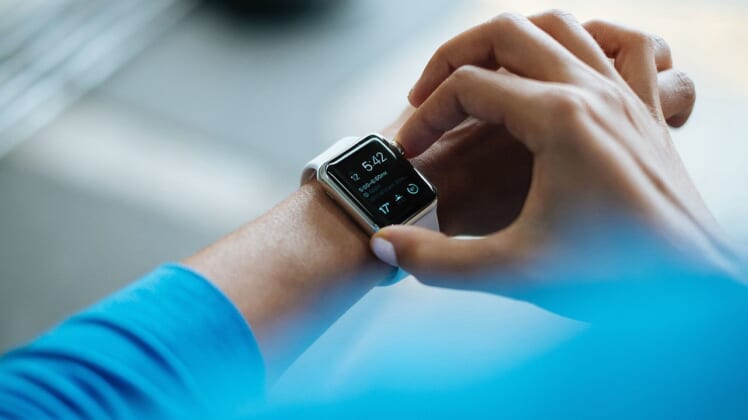Will the Newest Apple Watch Save Lives?

At first glance, the Apple Watch Series 3 seems very similar to its predecessor, the Apple Watch 2, which was released just last year. Most early reviews focus on the device’s newest feature, LTE connectivity, which allows users to take advantage of all of the gadget’s wireless functions without keeping their phone nearby. Since most of us don’t leave the house without our phone, some reviewers and users are wondering why Apple released the Series 3 right on the heels of the last generation.
The answer is surprising and potentially game-changing for Apple—they want to break into healthcare. There’s a more subtle upgrade to the Series 3 that may be significant to users who primarily use their Apple Watch to track their fitness and health goals or who are at risk for heart disease. The updated heart monitoring capabilities of the third generation of the Apple Watch may be able to alert you to potential health problems, making the Watch not just a cool fitness gadget but a potentially life-saving medical device.
Heart Disease Risk
The heart rate app has been expanded to not only track your heart rate during exercise but to monitor resting heart rate and recovery heart rate. The watch will even send you a notification if your resting heart rate becomes elevated when you’re not active. While fitness aficionados often focus on target heart rates during exercise, your resting heart rate, which is determined primarily by your genes and activity level, can be an important key to understanding your overall risk for heart disease. Researchers have found that a gradual rise in resting heart rate over a period of years can indicate an increased risk of heart-disease related death.
READ MORE: Eight Steps to Preventing Heart Disease
Potentially Life-Threatening Arrhythmias
The Apple Watch Series 3 also tracks heart rhythm and can let users know if their heart rate becomes irregular. An irregular heartbeat, which can include skipped or extra beats, is called an arrhythmia. Sometimes arrhythmias can be felt, and sometimes they’re “silent,” presenting without any noticeable symptoms. Either type of arrhythmia can be either harmless or an indication that something’s wrong. The only way to know is to get it checked out by a doctor so that they can determine what type of arrhythmia you’re experiencing.
The most common type of arrhythmia is called atrial fibrillation (aFib). According to the American Heart Association, at least 2.7 million Americans live with aFib. Those with symptoms are often diagnosed by a physician, but many people with aFib never have symptoms. Risks of living with aFib include blood clots, stroke, and heart failure, but proper treatment can dramatically reduce these risks. (It’s estimated that aFib is responsible for 1 in 4 strokes.) If it’s shown that the Apple Watch Series 3 can reliably detect irregular heart rhythms, the gadget may actually extend the lives of people living with symptomless, dangerous arrhythmias like aFib.
In 2016, Apple teamed up with the heartrate tracking app Cardiogram and the University of California, San Francisco to see if an Apple Watch could be used to detect abnormal heart rhythms and prevent stroke in some users. They found that the Apple Watch, when partnered with an algorithm developed by experts to detect arrhythmias, is 97% accurate at detecting aFib. This was just a preliminary study, but it could lead to amazing breakthroughs. It’s estimated that two-thirds of the strokes caused by aFib are preventable if patients receive treatment.
The Newest Study
To investigate how valuable the Apple Watch Series 3 may be as a real-life diagnostic tool, Apple is now teaming up with clinicians at Stanford University to investigate the Watch’s ability to detect arrhythmias in previously undiagnosed users. Apple has also been working closely with the FDA on its new heartrate tracking features, trying to build on last year’s study. The Apple Heart Study will become available in the US App Store later this year.
While edging into the health market could, obviously, be a huge financial success for Apple, it could also be a huge gain for older Americans who are becoming increasingly comfortable with wearable technology and who are at highest risk for heart attack and stroke. If the newest study is successful, there may be a fashionable, fun, and relatively affordable way to catch conditions like aFib earlier than standard care would.
So, while some critics are convinced that Apple is unrolling their next smart watch too soon, they don’t seem to realize that Apple is on the precipice of being able to market a new kind of product, one that serves as entertainment device, fitness guide, and medically-approved heart rate monitor. They’re on the edge of being able to offer a trendy, multi-use gadget that may actually save lives.
